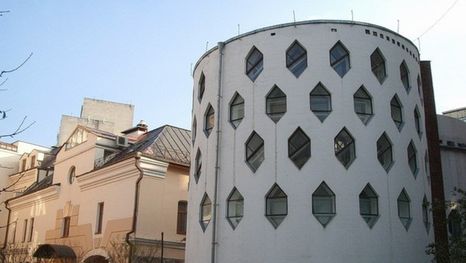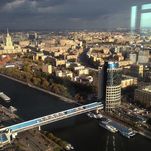Moscow constructivism (avant-garde)
This architectural style almost became the main one in Moscow, officially adopted by the young Soviet state. However, Stalin then radically changed his own architecture policy. Nonetheless, for almost 10 years Moscow gained many masterpieces of constructivism – far more than in other world capitals, where these projects often never left the drawing board.
The 1917 revolution caused a surge of avant-garde experiments in the creative environment, replacing classicism and the previously fashionable Art Nouveau. Renowned Soviet constructivism left a vivid footprint in the country’s architecture, and its significance is no less than the role played by the German Bauhaus school or the Dutch De Stijl movement, despite its short-livedness.
Moscow, as the capital of the new state, Soviet Russia, was a platform where grandiose plans and projects sprang to life; the city was supposed to become a showcase for the socialist way of life, workplace management, and human spiritual life. Constructivism was an architectural language. In Moscow, foreign architects received orders, including the guru in this area – Le Corbusier. Alongside this, a whole galaxy of stars rose in this area in the Russian school of architecture. Nowhere else in the world was this style so vividly embodied on such a grand scale. As often happens in Russia, a time when one style is universally used becomes replaced by its complete rejection.
With the strengthening of Stalin’s dictatorship, as an area of focus constructivism was accused of pretentiousness, and by the 1930’s was virtually banned. Nevertheless, constructivism’s legacy in Moscow is multi-faceted: commune buildings, workers’ clubs, industrial cafeterias, and bus depots were the display window for the life offered by constructivism. You can learn about the key figures who created this style (Melnikov, Leonidov, Tatlin, El Lissitzsky, Ginzburg, and others) and discover 1920’s architecture in modern-day Moscow.








































